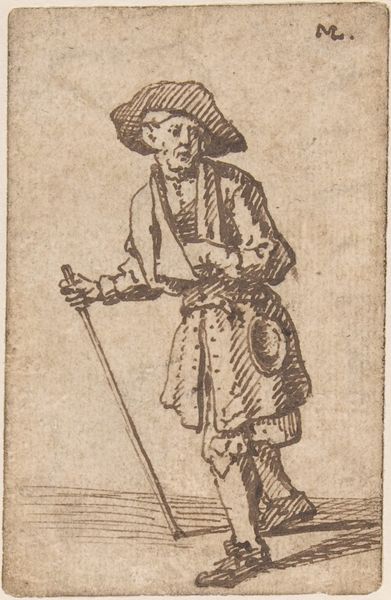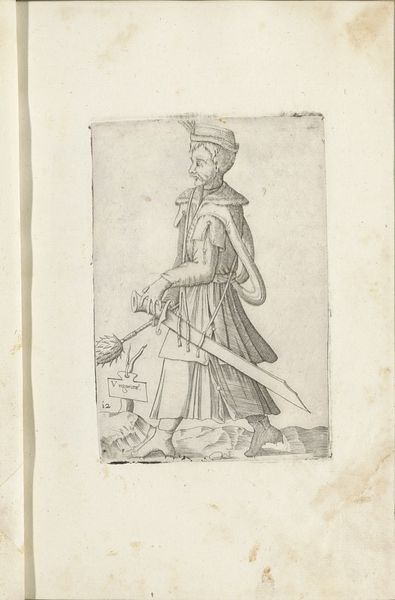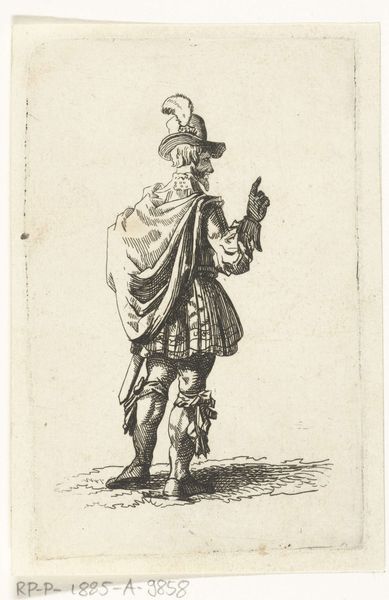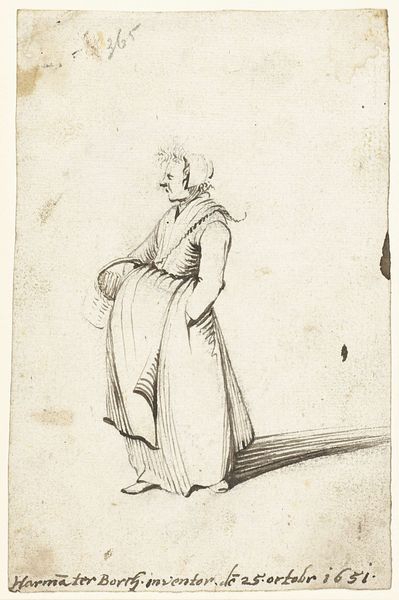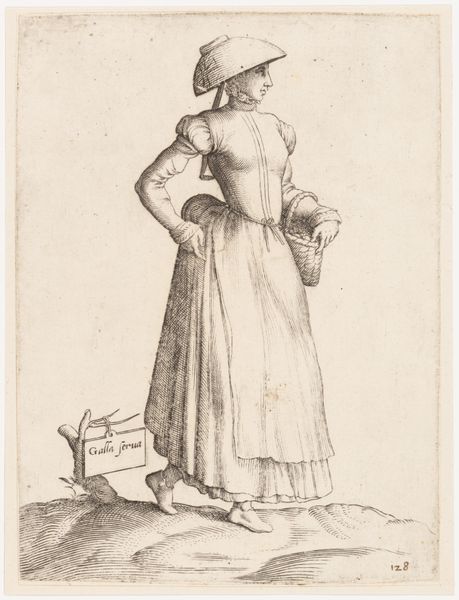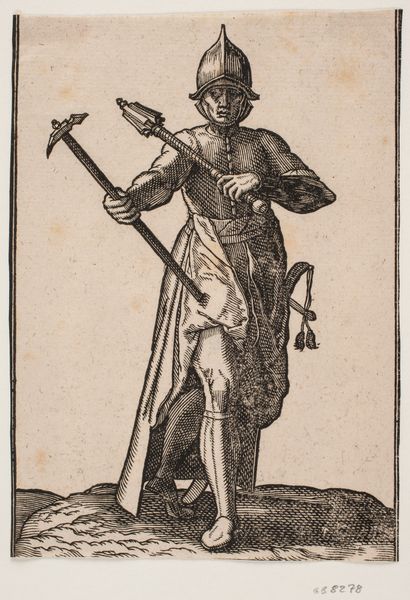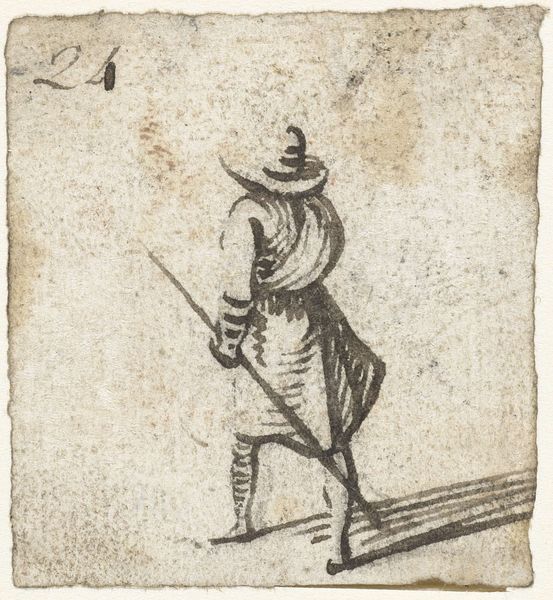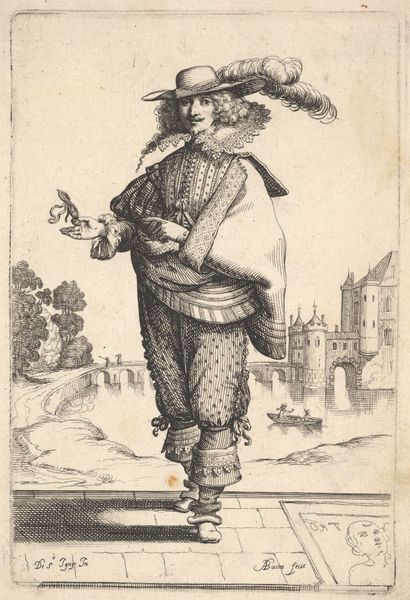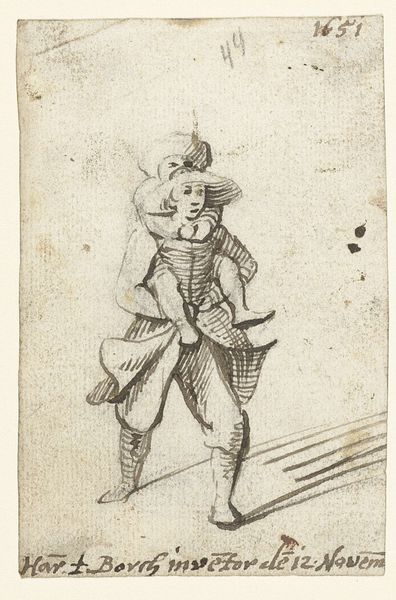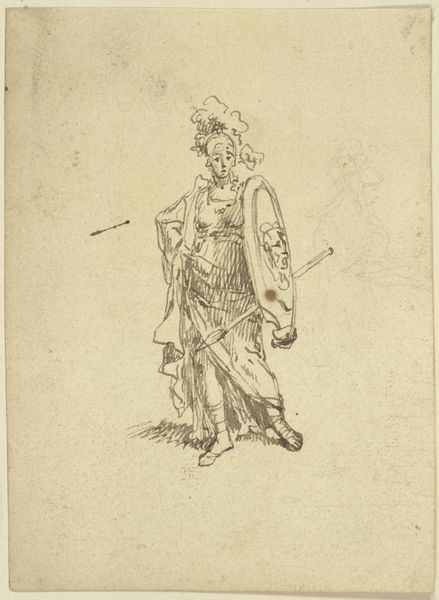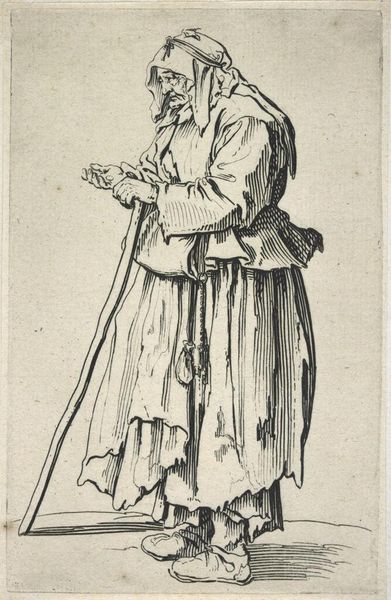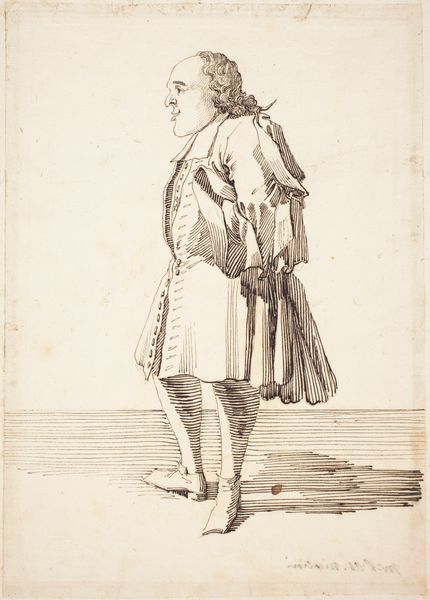
drawing, paper, ink
#
portrait
#
drawing
#
narrative-art
#
dutch-golden-age
#
figuration
#
paper
#
ink
#
genre-painting
Dimensions: height 123 mm, width 80 mm
Copyright: Rijks Museum: Open Domain
Curator: Welcome. Before us is "Lopende Herderin," or "Running Shepherdess," a drawing rendered circa 1654 by Gesina ter Borch. This captivating work, presently residing in the Rijksmuseum, is skillfully crafted with pen and brown ink on paper. Editor: My first impression? A burst of life, almost hurried. There's a sense of immediate action; the figure seems caught in motion. Curator: Precisely. Ter Borch’s background really informs this sense of immediacy. She was a member of a prominent family deeply entrenched in the artistic and political circles of the Dutch Golden Age, offering a unique lens into 17th-century Dutch society. It is tempting to consider her positioning as a woman artist from this background shaping the scene. Editor: The composition seems rather unusual for a traditional portrait. She's not static or posed. Instead, the artist chooses to depict the woman in stride, lending a kind of rebellious air. How might this challenge conventional representations of women during this period? Curator: Traditionally, portraits during that time presented women as passive subjects. Gesina ter Borch instead seems interested in conveying energy, defying societal norms around feminine presentation. Editor: Look closely at the lines and ink. See how deftly the artist has suggested so much with such simple materials? She communicates this vibrant impression so gracefully! It prompts a discussion around contemporary constructions of femininity versus historic artistic representations. Curator: And let's remember that these drawings served a purpose, often functioning as preparatory sketches or models for larger works, circulated among artists, collected by enthusiasts. They had a social life beyond their creation, indicative of a lively exchange within artistic communities. The Rijksmuseum context positions it within Dutch cultural heritage, ascribing significance to both her as a woman and to her artwork in shaping understandings of the Dutch Golden Age. Editor: Yes, situating "Lopende Herderin" within these layered contexts brings forward intriguing questions about agency and self-representation. Ter Borch provides a vibrant, active female presence in her drawing that resonates even now. Thank you, it’s provided such new considerations around her, this image, and what they contribute. Curator: A pleasure, thank you for the dialogue that highlighted so beautifully what is exciting about the cultural legacies visible within.
Comments
No comments
Be the first to comment and join the conversation on the ultimate creative platform.
